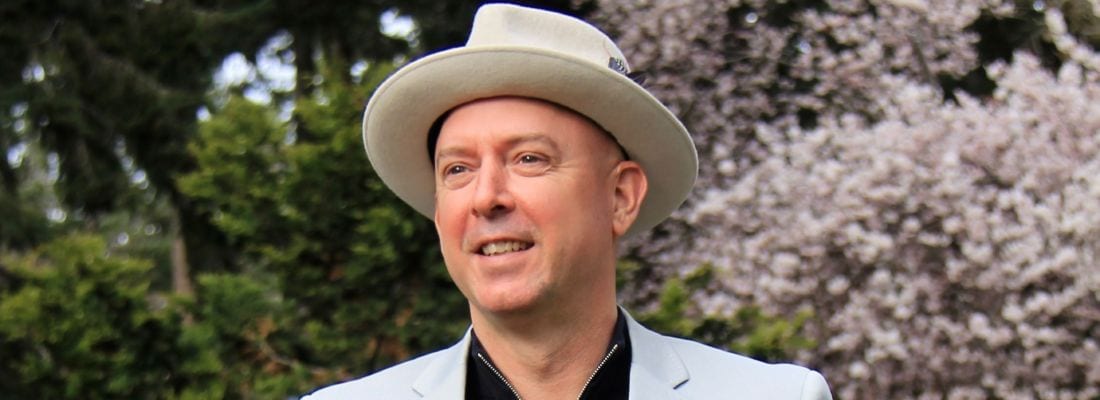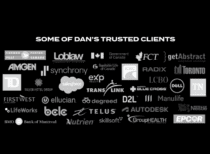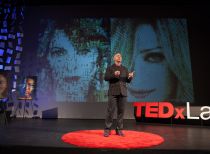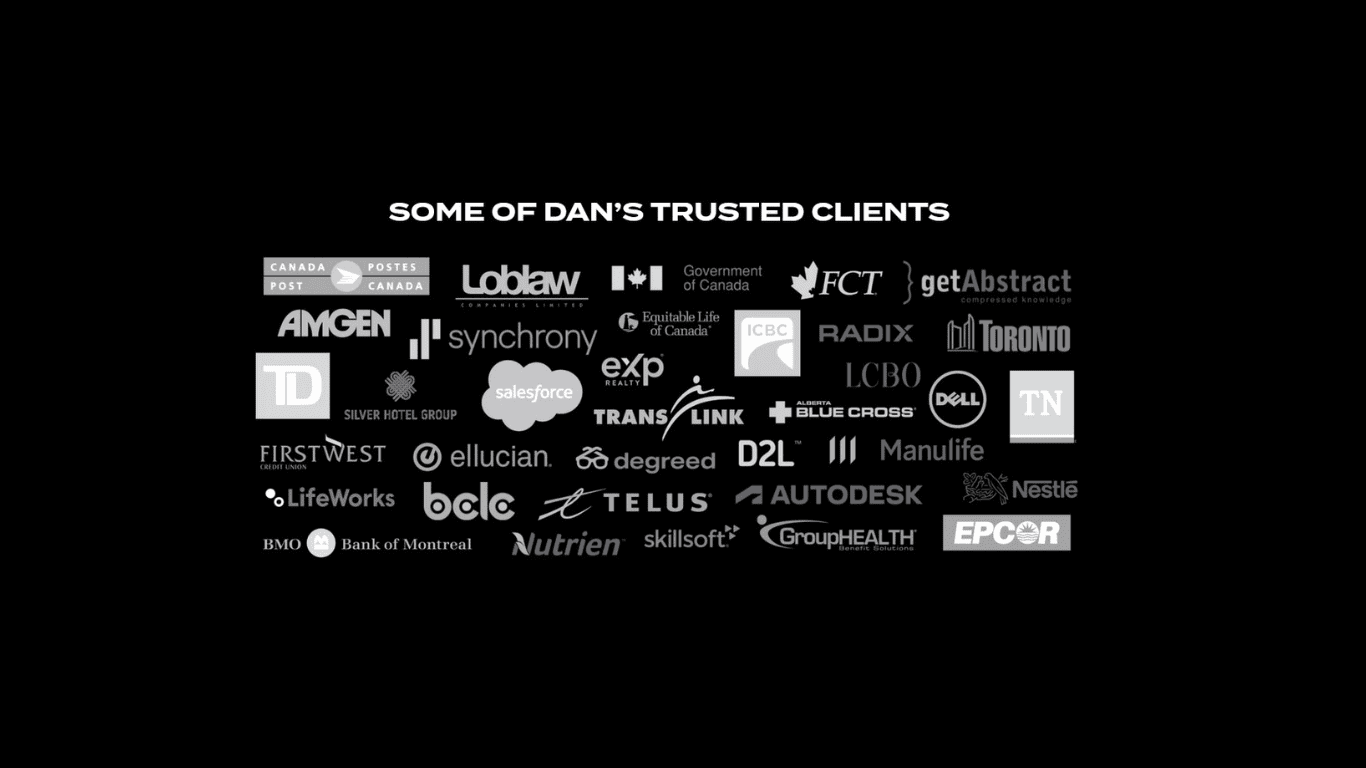Keynote Speeches
In today’s landscape, there are significant challenges that we often overlook: ‘the elephants in the leadership room.’ Acknowledging these three ‘elephants’ and learning how to navigate them as a leader is crucial.
#1: The Reality of Your Busyness
Speed, multitasking, and overall busyness are the norms for people today, leaving little time for reflection. Balancing action with reflection is vital to maintaining high performance in today’s always-on demands.
#2: Collaborate or Else
Proactive collaboration shapes how work gets done and how you’re perceived. Engaging broadly across the organization leads to better outcomes. You must aim to be known as someone open-minded, proactive, and inclusive, fostering the exchange of ideas and intelligence.
#3: Being Relatable and Empathetic
Embrace humility, listening, and empathy. Practicing empathy in interactions with peers and team members creates magic. Your network is your net worth-invest in relating to and championing those you work with.
Outcomes:
- Boost Efficiency: Balance action with reflection for top performance and less busyness.
- Foster Innovation: Drive success with proactive, inclusive collaboration skills with others.
- Strengthen Bonds: Build deeper connections and ties through empathy and humility.
- Expand Influence: Grow your impact with meaningful professional relationships.
- Transform Leadership: Create a dynamic, inclusive, and communicative style of leadership.
The Age Opportunity: Why the Future of Work Is Grey
The worst part? You can’t see it. There is an invisible demographic crisis ahead, with no solution… until now.
Your leadership future demands a strategic shift from outdated workforce models and practices to a dynamic, age-inclusive organizational culture. Are you ready?
Grounded in deep research and real-world success stories, this timely keynote introduces clear, actionable frameworks designed specifically to counter the looming “Age Debt” crisis and harness a powerful “Experience Dividend.”
Learn how innovative tools—such as the Career Canvas, Wisdom Wheel, and Longevity Lens—can break down generational barriers, capture critical knowledge, and unlock the untapped potential of an age-diverse workforce.
Organizations and leaders that ignore the age dilemma risk fading into irrelevance. Those who proactively leverage age diversity will dominate the next decade.
Which future will you choose?
OUTCOMES:
- Age Debt: Identify how generational divides, workforce aging, and lost institutional wisdom directly and indirectly undermine your organization’s performance and effectiveness.
- Workforce Pressure Points: Realize how demographic pressures, ageism, and longevity uniquely impact your Rivers (early-career), Rocks (mid-career), and Rubies (seasoned experts) across the organization.
- Experience Dividend: Discover how age-inclusive strategies turn demographic shifts into competitive advantages, boosting innovation, collaboration, and productivity.
- Generational Agility: Learn three important frameworks—Career Canvas, Wisdom Wheel, and Longevity Lens—to foster seamless teamwork and continuous growth among your Rivers, Rocks, and Rubies.
For far too long organizations have functioned in ways that make us feel like every day is a root canal at the dentist’s office. We need to first understand why it’s been this way, but we also require a pathway to adjust – both personally and organizationally. Join this session to find your path to joy by becoming experts at decoding work.
Key Takeaways/Applications:
- Discover what organizational impediments get in the way of our workplace happiness.
- Ascertain the personal hurdles and hindrances that cause workplace dissatisfaction.
- Employ tactics to help you develop virtues, character, agency, autonomy, affiliation, ambitions, competence, and networks.
- Develop strategies to circumnavigate organizational barriers such as org charts, HR policies, strategy statements, decision trees, and more.
Genuine leadership—how leaders act as human beings in their daily and strategic work with employees, customers and stakeholders—is arguably missing in many of today’s organizations. The reasons are all too familiar. It has to stop. Author Dan Pontefract recommends several leadership strategies and techniques that are sure to get you thinking about your own leadership habits and track record. The Field Guide to Genuine Leadership tackles the many taboos of bad leadership, while outlining practical, meaningful ways in which to become a more humane and effective leader.
Many of our current systems train us merely to function. We learn the routine. We master the process. The regiment starts at school, continues at university, and goes into overdrive when we begin to work.
The problem? Ultimately we have lost the ability to think critically, to be creative, and to contemplate ideas of the unknown. Standards, procedures, technology, and incessant demand for short-term results over long-term planning are the big winners.
In order to mitigate such calamities including the relentless pursuit of action and the pressure to “do more with less,” individuals must return to a state of balance between the three components of productive thought: dreaming, deciding, and doing.
In this talk, author Dan Pontefract introduces tangible, actionable strategies to improve the way we think as organizations and individuals through the cyclical process of Creative Thinking, Critical Thinking and Applied Thinking.
To become an Open Thinker, one must understand the relationship between reflection and action, and how it can negatively or positively affect an outcome. Dream. Decide. Do, Repeat.
Leaders may not know it yet, but having a sense of purpose has become table stakes for many employees at work. Equally important, today’s organizations are being pressured to begin exhibiting purpose in their operating practices.
If there is a positive interconnection between the three distinct categories of purpose–personal, role and organization—the benefits will be felt by all stakeholders. Author Dan Pontefract refers to this balanced state of purpose as the ‘sweet spot.’
The alignment of purpose between self, role and organization is important not only for employees, but for leaders in the organization itself. The more a leader can assist employees to understand the alignment of personal, organizational and role purpose, the quicker everyone will recognize how important the ‘sweet spot’ is to an engaging and fulfilling lifetime of work. The quicker an employee defines, develops and decides their purpose—alongside how bought in they are to the organization’s purpose—the more engaged and innovative they will be in their role … and in their life in general.
Ever wonder why global levels of employee engagement in organizations continue to wane and remain so incredibly low? For leaders in any organization seeking to improve productivity and business results, they must first start with its own operating culture.
To improve organizational culture is to build up and unleash behaviours that permit employees to connect and collaborate with one another effortlessly and full of goodwill. An employee only becomes engaged when the culture is open, transparent, communicative, collaborative and trustworthy.
These are just some of the behaviours that must define how an organization operates. Author Dan Pontefract implores organizations to rethink its workplace culture by instituting systemic-wide behaviours that encourage one another to work together versus in silos or competitively. Engagement of employees occurs as a result of how they feel about the organization’s culture and its purpose. There is a way to fix it, and Dan has a way to help you out.




















Similar Speakers 123